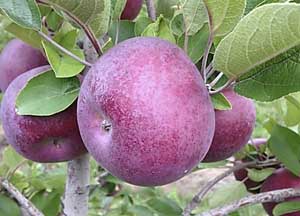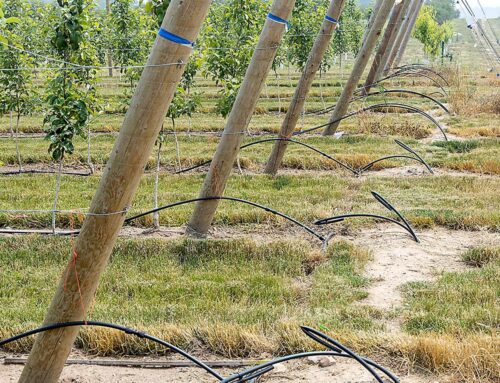Watch out for mutants!

Randy Beaudry
Not three-eyed monsters that might appear in your headlights near cemeteries on dark nights. We’re talking about apple mutations—sport—that appear randomly on apple trees in orchards.
Dr. Randy Beaudry, the post-harvest physiologist at Michigan State University, would like growers to keep an eye out for limbs bearing fruit different from other fruit on the tree.
He thinks these sports present the perfect opportunity to identify the location of the genes that control important quality traits.
Growers have been noticing sports for years. Some of them very successfully found new strains of varieties that are earlier, later, bigger, or redder and earned money from royalties when this new wood was propagated and sold to other growers.
There are now dozens of strains of McIntosh and Gala, and several of earlier or redder Honeycrisp.
Beaudry wants to find the genes behind these changes, but sometimes genetics are just too complicated. There are thousands of genes that make a McIntosh different from a Honeycrisp. But in a sport, there may be just one gene that makes the limb different from the rest of the tree.
“In wine grapes, a one-gene mutation makes the difference between Pinot Noir and Pinot Grigio,” Beaudry said. “A single change in one gene, just one base, resulted in a specific protein change that makes the varieties different.”
That gave him the idea that a specific gene for a specific fruit trait might be located by comparing the genomes of the parent tree and the sport limb.
The technology to make that kind of comparison now exists. Beaudry has teamed up with Dr. Korbinian Schneeberger, a genetics researcher at the Max Planck Institute for Plant Breeding Research in Germany. He has developed what he calls “next generation sequencing” to identify gene function by comparing genomes.
Beaudry said Schneeberger is “the one guy on the planet” who can do this. But until Beaudry entered the picture, Schneeberger was working with noncommercial plants. “He didn’t know about sports and the possibility of finding plants that might differ from each other by only one gene,” Beaudry said.
“We propose to use cutting edge sequencing tools and bioinfomatic algorithms to identify the mutations responsible for quality traits in apple.”
Now, Beaudry is asking growers to keep their eyes open, looking for limbs that are clearly different in terms of fruit or leaf color, fruit size, earliness or lateness of ripening, russeting or smoothness of skin, ability to form spurs, or freedom from disease or defects.
“Wouldn’t it be nice to find a non-bitter pitting Honeycrisp?” he asks. “Maybe there’s a limb somewhere that bears fruit that never has bitter pit.”
Beaudry has already recruited some folks with a reputation for finding sports. Both the Harold Thome and Bernard Thome families on Fruit Ridge north of Grand Rapids have found important sports of McIntosh and Empire.
Growers Fred Rasch and Bernie Thome are listed as collaborators on the project. Also collaborating is Wanda Heuser Gale at International Plant Management, who works with growers who find sports to develop them into full-fledged varieties.

RubyMac (Courtesy University of Massachusetts, Amherst.)
One of those is RubyMac, a sport of McIntosh found by Bernard Thome in 1999 and patented in 2006.
Beaudry has already sent samples from the parent tree that generated RubyMac, with the hope of identifying the gene or genes that give it that deep redness that covers almost the entire apple and make it color earlier in the season.
Luckily, the parent tree that produced that limb mutation—a McIntosh of the strain called Startling—still exists in that orchard near Comstock Park, Michigan.
Beaudry spoke to growers during the fourth annual RidgeFest this summer, where he made his appeal for their support. He stressed that this is a “proof of concept” project, an experiment, and that his work is based on a hypothesis. It has not been proven.
“Our initial focus will be on color development (anthocyanin formation), since this is an easy phenotype to characterize and much of the biology of color formation in apple is well understood at the molecular and physiological levels,” he wrote in seeking funding for the project. “If we can demonstrate this technique to be feasible, it will allow us to very rapidly characterize dozens of value-related genes and begin exploring aspects of biology that would otherwise be effectively intractable.” •
– by Richard Lehnert






Leave A Comment